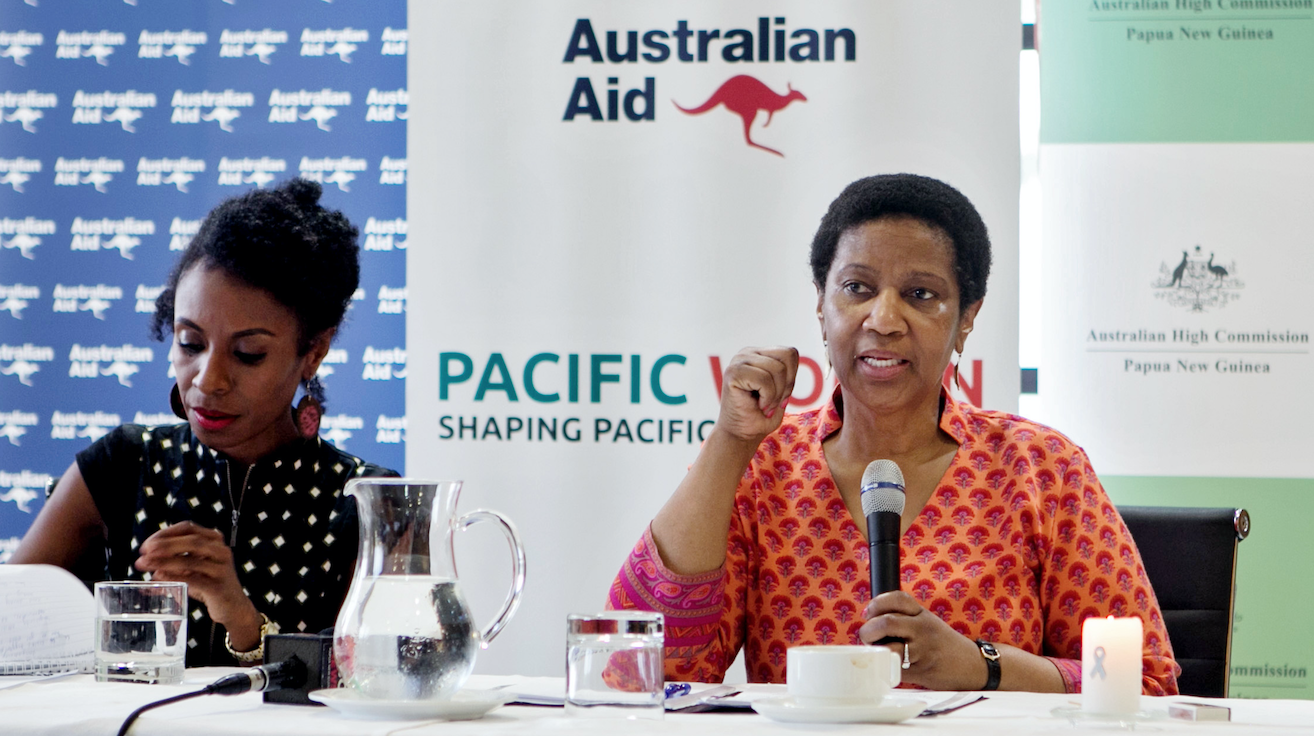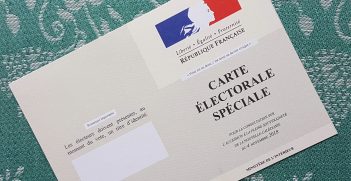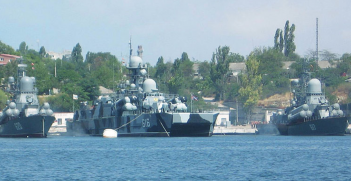Where are the Women? Gender, Security and Australia’s Pacific Step Up

As the Pacific Step Up gathers momentum, it is time for more breadth in Pacific security analysis and more sustained effort to invite women to be part of negotiations. And it is time that those devising this security architecture reacquaint themselves with our government’s promises to Pacific women.
This article was originally published on Australian Outlook on 23 July 2019.
The question of how to more effectively engage with the Pacific Islands region became one of the “hot” topics in foreign affairs and security policy circles in Australia in 2018. In response to China’s increasing efforts to make its diplomatic and development aid presence felt in this part of the world, and amidst Australian fears that its own regional influence has declined, Canberra’s policy community spent much of 2018 reflecting on possible counter-moves. As forecast in the 2017 Foreign Policy White Paper, a suite of policy and program initiatives were announced towards the end of 2018, aiming to re-establish strategic collaboration and connection into the Pacific Island region.
Alongside the announcement of five new diplomatic posts and the two-billion-dollar Australian Infrastructure Financing Facility, the Step Up also prioritises a reanimated security focus in Australia’s foreign policy approach to the region. This aspect of the policy agenda includes Pacific Fusion, a project promising improved collaboration on non-traditional security — fisheries, organised crime — between Australian and Pacific Island, a commitment to establish a new Australia Pacific Security College that will build security-agency cooperation through collaborative learning and training across the region, as well as a joint-agreement recently signed with Papua New Guinea to re-develop a former Australian naval base at Lombrum on Manus Island, PNG, not used by Australian Navy vessels since the 1960s.
My own work with women from a range of Pacific Island countries across the past 20 years suggests to me that this policy menu is almost entirely divorced from the perspectives and expectations that women from Pacific Island countries share when they are asked about what security is, and how it can be achieved.
These announcements also fail to adhere to regional and international commitments such as UN Security Council Resolution 1325 on Women, Peace and Security, which should be understood as obligating policymakers to consult with women on matters related to regional security. Indeed, the Gender Equality and Women’s Empowerment strategy launched by the Australian Department of Foreign Affairs and Trade in 2016 is strongly influenced by this international policy framework. This strategy clearly states that Australia’s international engagement must place a central focus on the advancement of women, and particularly their participation in decision-making, in the broader effort to consolidate security and peace in the Indo-Pacific. The strategy also makes clear an aspiration that Australia will become recognised as a “global leader” in international engagement that prioritises the interests of women.
In principle, this will require a stronger recognition of Pacific women’s rights to be part of the debate on regional security and of the value of women’s input as critical stakeholders. Practically, this engagement will need to grapple with the varied ways that conflict and insecurity have been lived by women in the Pacific Islands region and consider how these women can be most appropriately assisted in their own efforts to build security and peace.
Two broad points are critical here.
First, there is a need for more breadth in Pacific regional security analysis, and a much greater effort made to talk to Pacific communities themselves about what security means to them. Aside from the ongoing issue of climate insecurity which looms large amongst the region’s leaders as an issue of deep concern, and which is strikingly absent from the design of Australia’s Pacific Step Up, asking questions of this sort will offer new perspectives on other sources of insecurity. My own conversations on these themes with women from conflict-affected territories and countries of the region — Bougainville, New Caledonia, Solomon Islands and Fiji — has allowed me to appreciate the continuity of insecurity that, for many Pacific peoples, exists in the wake of conflict where uncontrolled civilian and militia violence has taken hold in the recent past. In Bougainville, women describe their war-time experience as “life between two guns,” indicative of the way that they felt trapped between warring parties and caught up in a scenario where arbitrary violence, rape and killing became legitimate activities for those groups who saw themselves to be at war.
The second point that requires emphasis is the need for a more sustained effort to invite women themselves to be part of the negotiations as the Pacific Step Up gathers momentum. My research on gender and conflict in this part of the world has revealed to me that women do not simply passively observe the local and global influences that fuel insecurity in their daily lives. Many take on important roles as agents of peace and security. But these roles nearly always require support. This support might come in the form of an invitation to allow women to meaningfully participate in meetings and consultations, to form expert groups, to inform impact surveys, to participate in peer-learning opportunities. When these supports are absent or tokenistic, women’s capacities to manage community tensions and conflict, even when culturally endorsed, can be easily discounted and they can often find themselves in danger. During the many conversations I have had with peace leaders, I have come to understand the personal risks and violence that women endure, particularly when their work challenges those to whom authority is understood to accrue more naturally.
What is the cost of ignoring women’s perspectives on conflict transition and security? We only have to reflect back on the short and unhappy fortunes of the deeply flawed Townsville Peace Agreement, negotiated to halt tensions between militants in the Solomon Islands, but without the presence of any civil society actors or any women’s representation, to understand the hazards that follow, and the interventions that may be later required when the peace-tables are closed to women’s presence and deaf to women’s voices.
These lessons seem not to have influenced Australia’s current Pacific Step Up security announcements in any way. Indeed gendered considerations are, for the moment, completely absent from the Step Up announcements, as well as from the security policy commentary which has generally lauded Canberra’s new attentiveness to questions of Pacific influence. This amounts to a startling and ignorant de-legitimation of the principle that women have a right to participate in debate and policy-making on regional and national security. It is also a worrying development that threatens to weaken the already shallow roots of the United Nations Women, Peace and Security policy in the Pacific region.
As policy-makers in Canberra scramble to reassert Australia’s regional influence in the Pacific, and the Step Up strategy moves from the announcement to the implementation phase, it is crucial that Australia’s commitments to global leadership on UNSC gender and security policy guide the way. This requires a framework for regional security engagement that stipulates broad negotiation and consultation with Pacific women as a valued constituency and as partners in the Step Up strategy. This will steer the government from its current tendency to treat the WPS framework as a niche agenda to be cherry picked in its foreign policy, or defence strategy documents when they require a touch of “local colour.” DFAT’s policy documents frequently feature public relations images of Pacific islands peoples benefitting from development largesse, or even more pointedly, local women joining the ranks of Pacific Island countries’ national security agencies (DFAT 2017). But this belies the fact that gender is erased when high-level regional negotiations on security architecture are underway.
Yet neither should Australia position itself hubristically as the “saviour” of Pacific women. Our security officials need to remember that women from the region have a long history of sustained work as peacebuilders and as activists who have drawn attention to the impacts of conflict-related violence and military authoritarianism in the Pacific. Gains in policy have been achieved as a result of their home-grown efforts. Yet nowhere in the Pacific, as yet, has this been followed up with implementation measures that are serious and that will help challenge the gendered norms that continue to position women as passive observers of insecurity. If this engagement with regional peace leaders is to proceed, it must occur in a way that accords respect and recognition of women’s achievements as critical and empowered actors and create meaningful opportunities for their participation.
An approach that does otherwise, and that closes the door to women’s perspectives on peace and security is outdated, internationally discredited, dangerous for women and dangerous for the Pacific. Furthermore, it is an approach that, as I have shown, is out of step with DFAT’s own Gender Equality and Women’s Empowerment strategy. It is time that those security “experts” who are devising a new regional security architecture for our region, and those who inclined to provide media commentary upon it, reacquaint themselves with the promises made by our government to women of the Pacific region. In doing so, they might learn more about why goals of gender-inclusive participation are important, where they have been critical to the achievement of durable peace in many parts of the world and why they must be a foundational consideration when security strategy is devised closer to home.
Associate Professor Nicole George is associate professor in Peace and Conflict Studies in the School of Political Science and International Studies at the University of Queensland.
This article is an extract from George’s article in Volume 73, Issue 3 of the Australian Journal of International Affairs titled “Gender, security and Australia’s 2018 Pacific Pivot: stalled impetus and shallow roots.” It is republished with permission.





